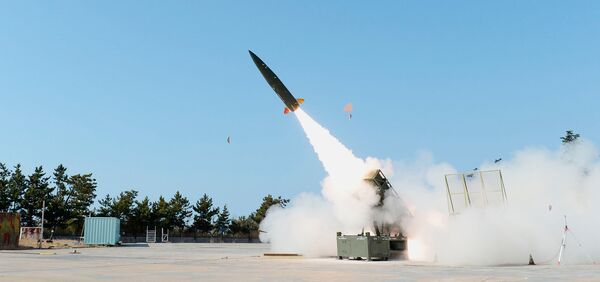
The KTSSM, pictured above from a test in 2021, features a payload section carrying a small-diameter penetrator warhead filled with a high‐blast or thermobaric explosive intended to attack protected, underground artillery emplacements. (ADD)
South Korea's Defense Acquisition Program Administration (DAPA) conducted a quality certification shooting test (QCST) of the Korean Tactical Surface-to-Surface Missile (KTSSM).
The QCST was jointly conducted and supervised by DAPA, the Defense Science Research Institute, the Republic of Korea (RoK) Army, KTSSM mass-producer Hanwha Aerospace, and the Defense Agency for Technology and Quality on 11 May.
A DAPA spokesperson recently told Janes , “Mass production [of the KTSSMs] is currently in progress.”
According to DAPA, the QCST is carried out to evaluate the performance of missiles currently in mass production.
In order to pass the QCST, the performance of missiles in mass production must match the performance of the missile that was developed, DAPA said.
“The QCST of the KTSSM was successful and the missile hit the target point,” DAPA added.
DAPA approved mass production plans to acquire at least 200 KTSSMs in November 2020. The project was budgeted at KRW320 billion (USD240 million) and is expected to be completed by 2025.
The KTSSM is developed by the country's Agency for Defense Development (ADD) and defence company Hanwha Aerospace.
Mass production of missiles was expected to begin in late 2020 or 2021, but was reportedly delayed because of the unavailability of components.
In September 2022, Hanwha told Janes that the company will start mass production of the KTSSM system from 2023 and the deployment of the missiles is expected to start from late 2023 or early 2024.
Looking to read the full article?
Gain unlimited access to Janes news and more...







